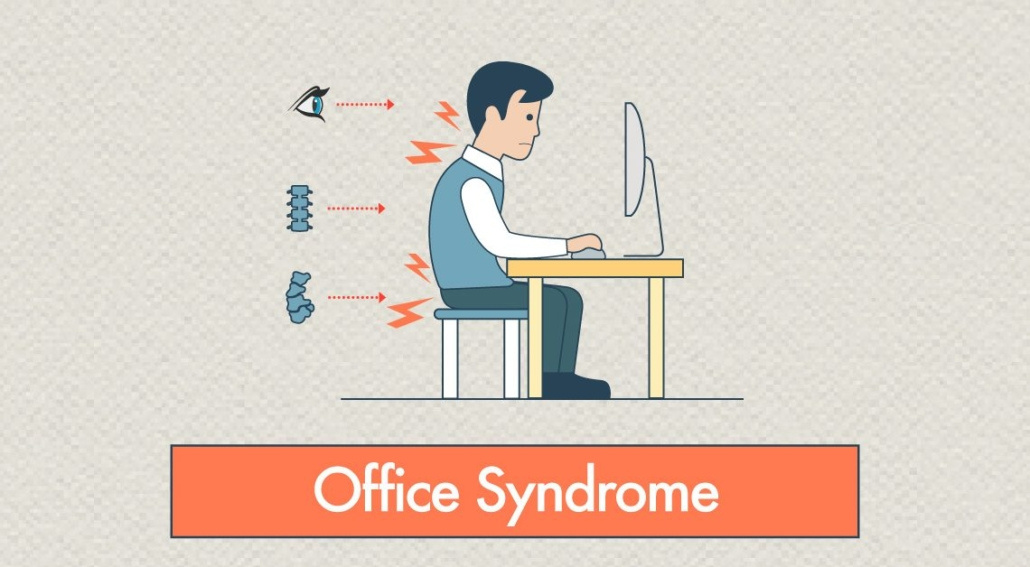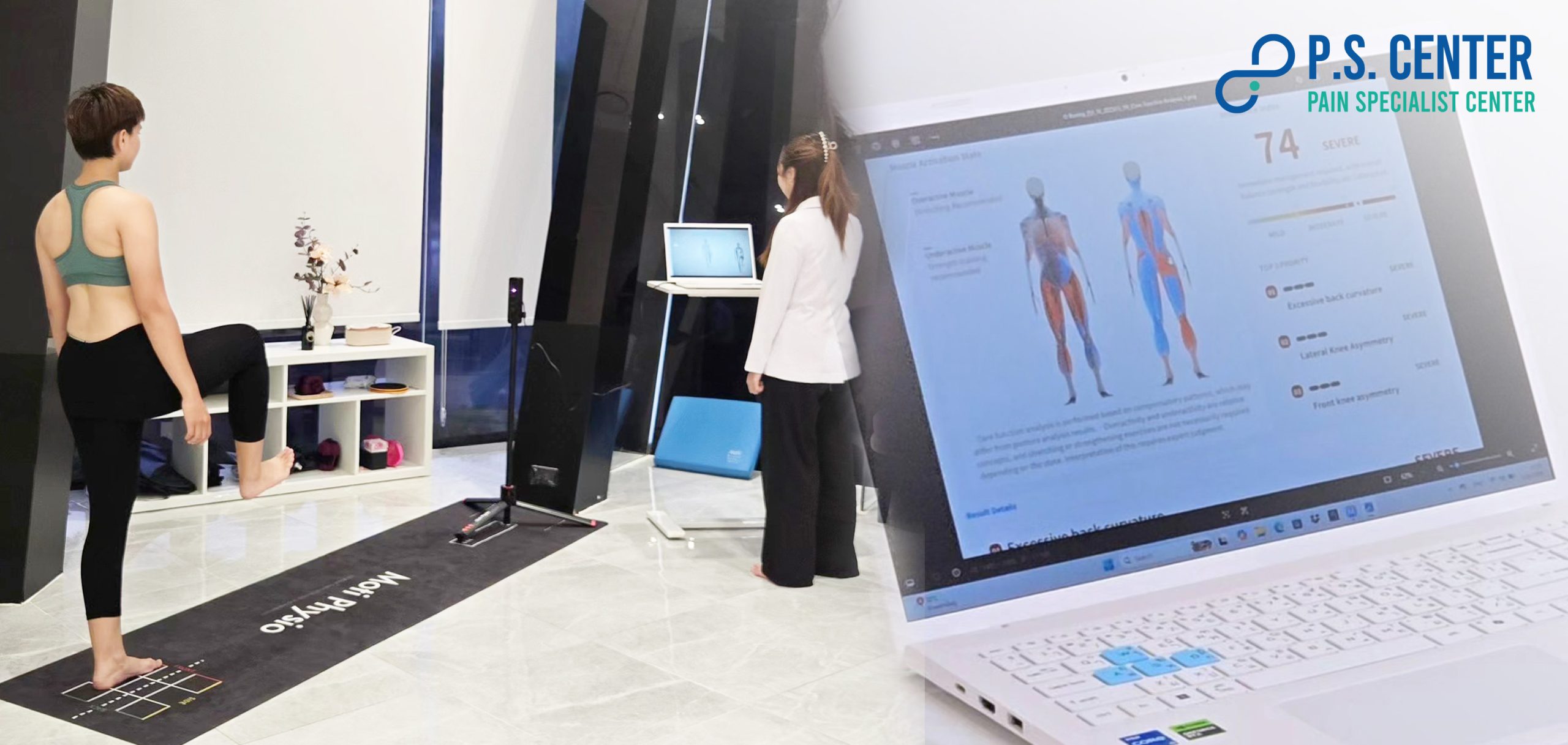Office Syndrome is not a disease, but a group of symptoms caused by improper or repetitive use of the body over time, such as:
- Slouching, rounded shoulders, or forward head posture
- Looking at a computer or phone screen for prolonged periods
- Using a desk or chair that doesn’t fit your body
- Using a mouse or keyboard in the wrong position
- Sitting in the same position for long periods without movement
When certain muscles are overworked while others weaken, it can lead to symptoms such as:
- Muscle pain and stiffness, especially in the neck, shoulders, and back
- Headaches caused by chronic muscle tension
- Wrist pain, trigger fingers, or tendon inflammation from repetitive use
- Numbness in hands or feet from nerve compression
- Radiating pain down the arms or legs
- Poor posture such as rounded shoulders or forward head
- Fatigue and exhaustion even without heavy physical activity

Why Physiotherapy Helps Office Syndrome Effectively
Many people think treating Office Syndrome is just about massage and relieving tension, but physiotherapy goes deeper. It addresses the musculoskeletal system, nerves, and body mechanics to target the root cause.
Treatment is personalized and may include:
- Assessing body structure and identifying causes of pain
- Releasing overly tight muscles while activating weak ones
- Prescribing exercises tailored to prevent recurring symptoms
- Correcting posture and optimizing workstation setup
The best part: physiotherapy is non-surgical and can produce visible, lasting improvements.
Office Syndrome Physiotherapy Program at P.S. Center
Our programs are personalized, covering acute pain relief, body balance restoration, and prevention of recurrence.
- Relieve muscle pain in neck, shoulders, arms, and tendons
- Manual Therapy: Release muscle and joint tension
- Ultrasound Therapy: Improve circulation and reduce inflammation
- Electrical Stimulation: Reduce pain and muscle tightness
- Therapeutic Exercises: Stretching and strengthening exercises
- Kinesio Taping: Support movement and reduce tension
- Manage numbness, radiating pain, and weakness
- Assess peripheral nerves for compression
- Nerve Mobilization: Reduce numbness and radiating pain
- Electrical Stimulation: Improve circulation and reduce nerve symptoms
- Optimize posture and workstation
- Ergonomic Setup: Adjust desk, chair, and equipment to fit your body
- Daily Exercises: Simple movements you can do throughout the day
- Recommend supportive tools like lumbar cushions or mouse pads
- Ergonomic Consultation: Personalized guidance
Don’t Let Office Syndrome Become Chronic
Ignoring symptoms can lead to more serious problems, such as herniated discs or chronic pain, which are harder to treat and take longer to recover from. Starting care now helps prevent Office Syndrome from interfering with your work and daily life.
Summary
Office Syndrome is a warning sign from your body that shouldn’t be ignored. Physiotherapy can relieve pain, restore balance, and prevent recurrence effectively.
🌱 At P.S. Center, our team of doctors and physiotherapists will design a personalized treatment plan to help you return to work and daily life with full strength and confidence.





